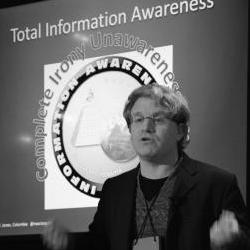Race After Technology
Wednesday 17 March 2021, 15:00–17:00 GMT
Co-facilitated by: Matthew L. Jones (Columbia University)
Summary
In Race After Technology, Benjamin argues that automation, far from being a sinister story of racist programmers scheming on the dark web, has the potential to hide, speed up, and deepen discrimination while appearing neutral and even benevolent when compared to the racism of a previous era. Presenting the concept of the 'New Jim Code', she shows how a range of discriminatory designs encode inequity by explicitly amplifying racial hierarchies, ignoring but thereby replicating social divisions, or aiming to fix racial bias but ultimately doing quite the opposite. Moreover, she makes a compelling case for race itself as a kind of technology, designed to stratify and sanctify social injustice in the architecture of everyday life.
In preparation for Benjamin's keynote address at the HoAI Summer School this July, we read a brief article and the introduction to her book alongside selected primary sources – predicting 'slave' ownership by 1965, and a recent translation of Masahiro Mori's initial identification of the 'uncanny valley' in 1970.
Assigned readings
- Benjamin, Ruha. 'Assessing Risk, Automating Racism'. Science 366, no. 6464 (25 October 2019): 421–22.
- Benjamin, Ruha. 'Introduction'. In Race after Technology: Abolitionist Tools for the New Jim Code, 1–48. Medford, MA: Polity, 2019.
- Binder, O. O. 'You'll Own "Slaves" by 1965'. Mechanix Illustrated, January 1957.
- Mori, Masahiro. 'The Uncanny Valley'. Translated by Karl MacDorman and Norri Kageki. IEEE Robotics & Automation Magazine 19, no. 2 (June 2012): 98–100.
Event summary
Prof. Matt Jones gave context to the four readings assigned this week. He noted the importance of Benjamin's framing of race itself as a set of technologies, used to generate patterns of social relations, and which become Black-boxed as natural, inevitable, or automatic. Noting her dual contributions to critical race theory and STS, Prof. Jones outlined Benjamin's attention to the creation sanctifications, promotions, and perceptions that obfuscate attributes similar to earlier discriminatory practices, through what she calls the New Jim Code. Prof. Jones also gave an overview of Otto Binder, a science-fiction, comic-book author (who wrote, among other things, iRobot as a remodulation of Frankenstein), and considered Binder's prophetic view of robots in the context of the 'You'll Own "Slaves" by 1965' piece. Prof. Jones noted the important imaginary turn in pairing the robot with criminology in Binder, or the positioning of the 'robot' as advanced 'mechanical mastermind' for detection. Lastly, Prof. Jones addressed Masahiro Mori's theorisation of 'The Uncanny Valley', questioning how it becomes translated as 'uncanny', particularly in the context of Freud. He offered the group a number of provocations for discussion, suggesting we consider:
- The question of genre in Benjamin's work
- 'Race correction' and other failures of apprehension
- Sanctification as analytic
The cohort went on to discuss these points and more at length.

